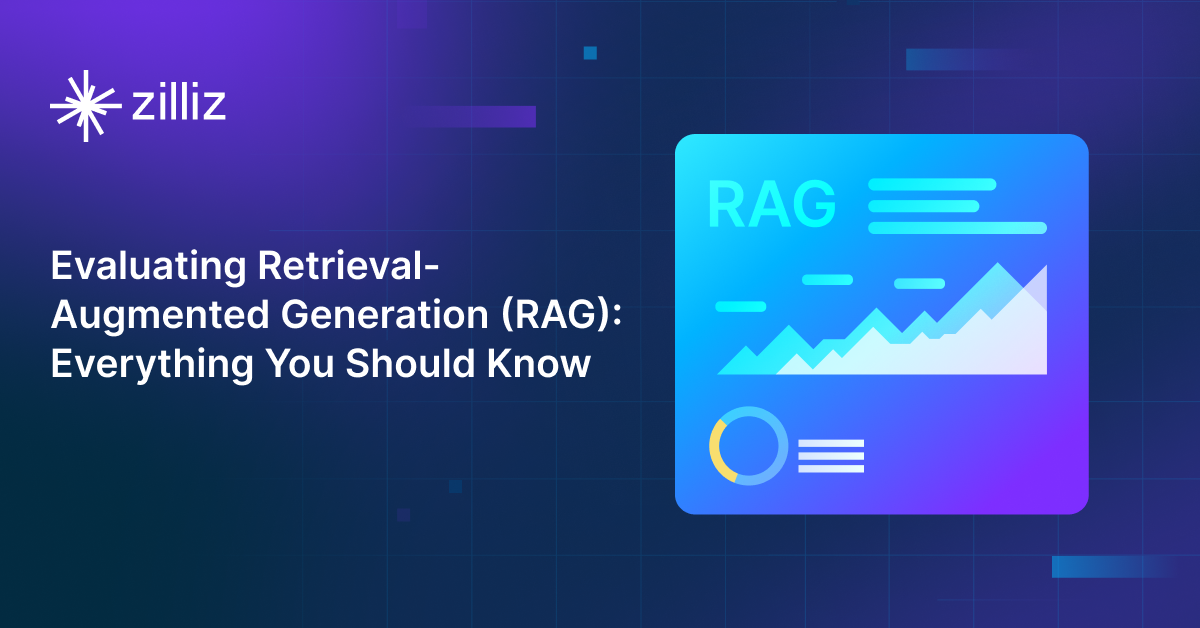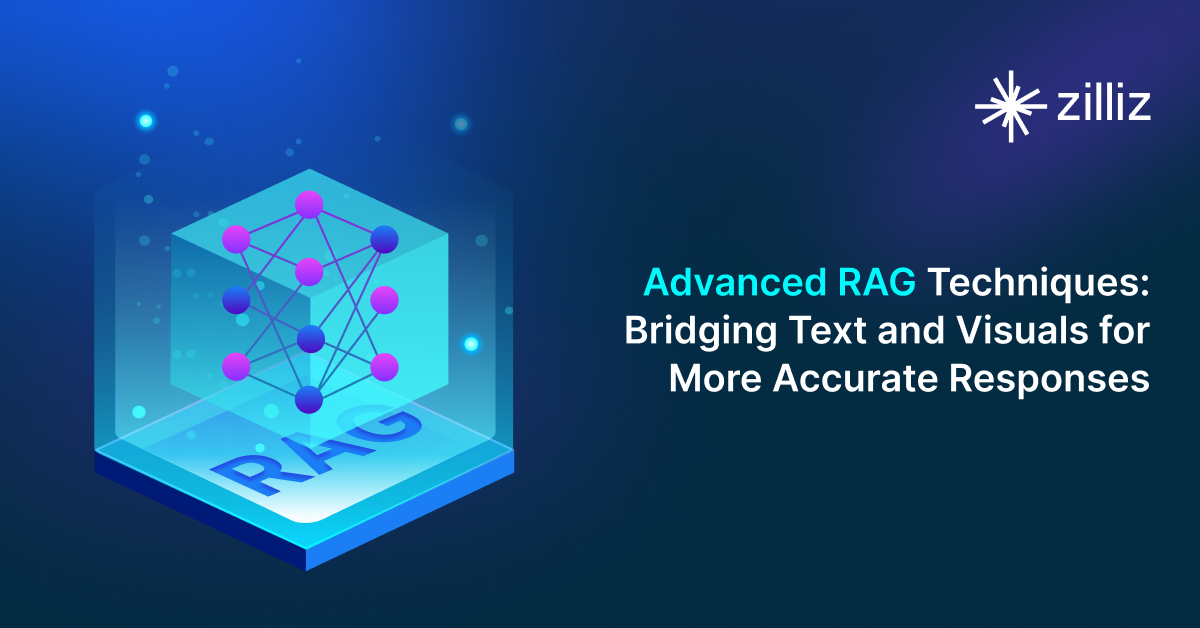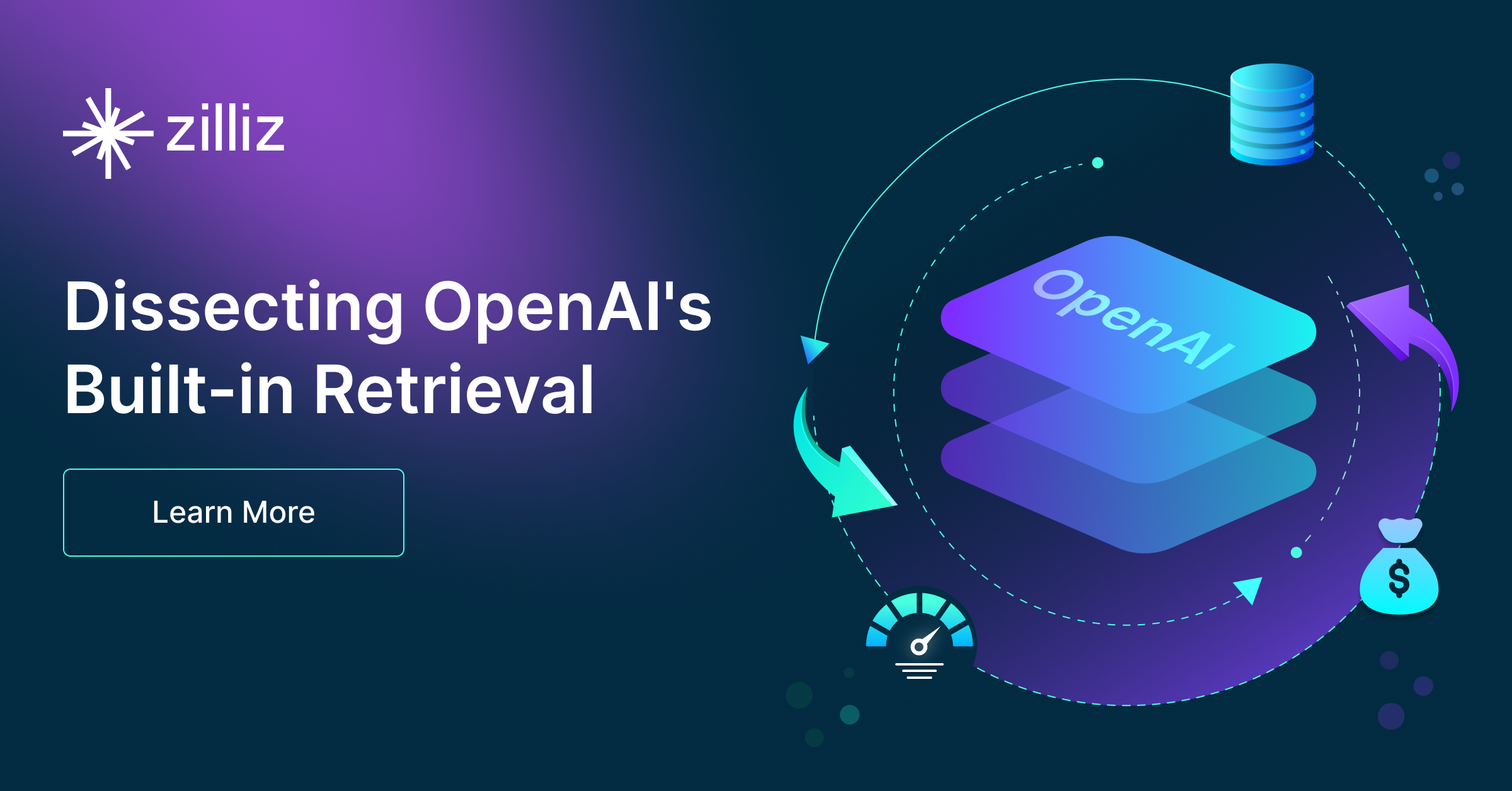Build RAG Chatbot with Haystack, Haystack In-memory store, NVIDIA Llama 3 70B Instruct, and jina-embeddings-v3
Introduction to RAG
Retrieval-Augmented Generation (RAG) is a game-changer for GenAI applications, especially in conversational AI. It combines the power of pre-trained large language models (LLMs) like OpenAI’s GPT with external knowledge sources stored in vector databases such as Milvus and Zilliz Cloud, allowing for more accurate, contextually relevant, and up-to-date response generation. A RAG pipeline usually consists of four basic components: a vector database, an embedding model, an LLM, and a framework.
Key Components We'll Use for This RAG Chatbot
This tutorial shows you how to build a simple RAG chatbot in Python using the following components:
- Haystack: An open-source Python framework designed for building production-ready NLP applications, particularly question answering and semantic search systems. Haystack excels at retrieving information from large document collections through its modular architecture that combines retrieval and reader components. Ideal for developers creating search applications, chatbots, and knowledge management systems that require efficient document processing and accurate information extraction from unstructured text.
- Haystack in-memory store: a very simple, in-memory document store with no extra services or dependencies. It is great for experimenting with Haystack, and we do not recommend using it for production. If you want a much more scalable solution for your apps or even enterprise projects, we recommend using Zilliz Cloud, which is a fully managed vector database service built on the open-source Milvusand offers a free tier supporting up to 1 million vectors.)
- NVIDIA Llama 3 70B Instruct: A high-performance AI model optimized by NVIDIA for complex instruction-following tasks, combining Meta's Llama 3 70B architecture with NVIDIA’s hardware-accelerated efficiency. Strengths include rapid inference, scalability on GPUs, and nuanced context understanding. Ideal for enterprise-grade chatbots, technical support automation, and data-driven decision-making in resource-intensive environments.
- Jina-Embeddings-v3: A state-of-the-art embedding model designed for high-dimensional vector representations of text, excelling in multilingual understanding and long-context retention. Its scalable architecture ensures robust performance in semantic search, clustering, and retrieval-augmented generation (RAG) systems. Ideal for applications requiring precise semantic analysis across diverse languages and lengthy documents, combining accuracy with efficiency.
By the end of this tutorial, you’ll have a functional chatbot capable of answering questions based on a custom knowledge base.
Note: Since we may use proprietary models in our tutorials, make sure you have the required API key beforehand.
Step 1: Install and Set Up Haystack
import os
import requests
from haystack import Pipeline
from haystack.components.converters import MarkdownToDocument
from haystack.components.preprocessors import DocumentSplitter
from haystack.components.writers import DocumentWriter
Step 2: Install and Set Up NVIDIA Llama 3 70B Instruct
To start using models self-hosted with NVIDIA, we need to install the nvidia-haystack package first.
pip install nvidia-haystack
To use LLMs with NVIDIA, you need to specify the correct api_url and your API key. You can get your API key directly from the catalog website. You also need to get an NVIDIA API key to build this pipeline. Here, we will use the NVIDIA_API_KEY environment variable by default. Otherwise, you can pass an API key at initialization with api_key, as in the following example.
from haystack.utils.auth import Secret
from haystack_integrations.components.generators.nvidia import NvidiaGenerator
generator = NvidiaGenerator(
model="meta/llama3-70b-instruct",
api_url="https://integrate.api.nvidia.com/v1",
api_key=Secret.from_token("<your-api-key>"),
model_arguments={
"temperature": 0.2,
"top_p": 0.7,
"max_tokens": 1024,
},
)
generator.warm_up()
Step 3: Install and Set Up jina-embeddings-v3
pip install jina-haystack
from haystack_integrations.components.embedders.jina import JinaTextEmbedder
from haystack_integrations.components.embedders.jina import JinaDocumentEmbedder
text_embedder = JinaTextEmbedder(api_key=Secret.from_token("<your-api-key>"), model="jina-embeddings-v3")
document_embedder = JinaDocumentEmbedder(api_key=Secret.from_token("<your-api-key>"), model="jina-embeddings-v3")
Step 4: Install and Set Up Haystack In-memory store
from haystack.document_stores.in_memory import InMemoryDocumentStore
from haystack.components.retrievers import InMemoryEmbeddingRetriever
document_store = InMemoryDocumentStore()
retriever=InMemoryEmbeddingRetriever(document_store=document_store))
Step 5: Build a RAG Chatbot
Now that you’ve set up all components, let’s start to build a simple chatbot. We’ll use the Milvus introduction doc as a private knowledge base. You can replace it your own dataset to customize your RAG chatbot.
url = 'https://raw.githubusercontent.com/milvus-io/milvus-docs/refs/heads/v2.5.x/site/en/about/overview.md'
example_file = 'example_file.md'
response = requests.get(url)
with open(example_file, 'wb') as f:
f.write(response.content)
file_paths = [example_file] # You can replace it with your own file paths.
indexing_pipeline = Pipeline()
indexing_pipeline.add_component("converter", MarkdownToDocument())
indexing_pipeline.add_component("splitter", DocumentSplitter(split_by="sentence", split_length=2))
indexing_pipeline.add_component("embedder", document_embedder)
indexing_pipeline.add_component("writer", DocumentWriter(document_store))
indexing_pipeline.connect("converter", "splitter")
indexing_pipeline.connect("splitter", "embedder")
indexing_pipeline.connect("embedder", "writer")
indexing_pipeline.run({"converter": {"sources": file_paths}})
# print("Number of documents:", document_store.count_documents())
question = "What is Milvus?" # You can replace it with your own question.
retrieval_pipeline = Pipeline()
retrieval_pipeline.add_component("embedder", text_embedder)
retrieval_pipeline.add_component("retriever", retriever)
retrieval_pipeline.connect("embedder", "retriever")
retrieval_results = retrieval_pipeline.run({"embedder": {"text": question}})
# for doc in retrieval_results["retriever"]["documents"]:
# print(doc.content)
# print("-" * 10)
from haystack.utils import Secret
from haystack.components.builders import PromptBuilder
retriever=InMemoryEmbeddingRetriever(document_store=document_store)
text_embedder = JinaTextEmbedder(api_key=Secret.from_token("<your-api-key>"), model="jina-embeddings-v3")
prompt_template = """Answer the following query based on the provided context. If the context does
not include an answer, reply with 'I don't know'.\n
Query: {{query}}
Documents:
{% for doc in documents %}
{{ doc.content }}
{% endfor %}
Answer:
"""
rag_pipeline = Pipeline()
rag_pipeline.add_component("text_embedder", text_embedder)
rag_pipeline.add_component("retriever", retriever)
rag_pipeline.add_component("prompt_builder", PromptBuilder(template=prompt_template))
rag_pipeline.add_component("generator", generator)
rag_pipeline.connect("text_embedder.embedding", "retriever.query_embedding")
rag_pipeline.connect("retriever.documents", "prompt_builder.documents")
rag_pipeline.connect("prompt_builder", "generator")
results = rag_pipeline.run({"text_embedder": {"text": question}, "prompt_builder": {"query": question},})
print('RAG answer:\n', results["generator"]["replies"][0])
Optimization Tips
As you build your RAG system, optimization is key to ensuring peak performance and efficiency. While setting up the components is an essential first step, fine-tuning each one will help you create a solution that works even better and scales seamlessly. In this section, we’ll share some practical tips for optimizing all these components, giving you the edge to build smarter, faster, and more responsive RAG applications.
Haystack optimization tips
To optimize Haystack in a RAG setup, ensure you use an efficient retriever like FAISS or Milvus for scalable and fast similarity searches. Fine-tune your document store settings, such as indexing strategies and storage backends, to balance speed and accuracy. Use batch processing for embedding generation to reduce latency and optimize API calls. Leverage Haystack's pipeline caching to avoid redundant computations, especially for frequently queried documents. Tune your reader model by selecting a lightweight yet accurate transformer-based model like DistilBERT to speed up response times. Implement query rewriting or filtering techniques to enhance retrieval quality, ensuring the most relevant documents are retrieved for generation. Finally, monitor system performance with Haystack’s built-in evaluation tools to iteratively refine your setup based on real-world query performance.
Haystack in-memory store optimization tips
Haystack in-memory store is just a very simple, in-memory document store with no extra services or dependencies. We recommend that you just experiment it with RAG pipeline within your Haystack framework, and we do not recommend using it for production. If you want a much more scalable solution for your apps or even enterprise projects, we recommend using Zilliz Cloud, which is a fully managed vector database service built on the open-source Milvusand offers a free tier supporting up to 1 million vectors
NVIDIA Llama 3 70B Instruct optimization tips
Optimize inference speed by leveraging model quantization (e.g., 16-bit or 8-bit) to reduce memory usage without significant accuracy loss. Use NVIDIA’s TensorRT-LLM for kernel fusion and efficient GPU utilization, and enable dynamic batching to process multiple queries concurrently. Fine-tune retrieval relevance thresholds to balance precision and recall, minimizing unnecessary context. Cache frequent retrieval results and precompute embeddings. Profile memory usage to avoid bottlenecks, and employ mixed-precision training if fine-tuning. Regularly update drivers and libraries (e.g., CUDA, PyTorch) to leverage hardware acceleration and software optimizations.
Jina-embeddings-v3 optimization tips
To optimize Jina-embeddings-v3 in a RAG setup, preprocess input text by normalizing casing, removing redundant whitespace, and truncating to the model’s maximum sequence length (e.g., 8,192 tokens). Batch embedding generation for parallel processing, balancing GPU/CPU memory constraints. Use FP16 precision for faster inference if hardware supports it. Cache frequently accessed document embeddings to reduce recomputation. Experiment with dimensionality reduction (e.g., PCA) if downstream tasks tolerate lower-dimensional vectors. Regularly update to the latest model version for performance improvements. Monitor latency and adjust batch sizes dynamically for throughput-latency trade-offs.
By implementing these tips across your components, you'll be able to enhance the performance and functionality of your RAG system, ensuring it’s optimized for both speed and accuracy. Keep testing, iterating, and refining your setup to stay ahead in the ever-evolving world of AI development.
RAG Cost Calculator: A Free Tool to Calculate Your Cost in Seconds
Estimating the cost of a Retrieval-Augmented Generation (RAG) pipeline involves analyzing expenses across vector storage, compute resources, and API usage. Key cost drivers include vector database queries, embedding generation, and LLM inference.
RAG Cost Calculator is a free tool that quickly estimates the cost of building a RAG pipeline, including chunking, embedding, vector storage/search, and LLM generation. It also helps you identify cost-saving opportunities and achieve up to 10x cost reduction on vector databases with the serverless option.
 Calculate your RAG cost
Calculate your RAG cost
What Have You Learned?
By now, you’ve unlocked the magic of building a RAG system from the ground up, and that’s no small feat! You’ve seen firsthand how Haystack acts as the backbone, seamlessly stitching together every component into a cohesive pipeline. The Haystack In-memory Store swooped in as your lightning-fast vector database, keeping your data accessible and ready for action, while jina-embeddings-v3 transformed raw text into rich, meaningful vectors—ensuring your system understands context like a pro. Then came the star of the show, NVIDIA Llama 3 70B Instruct, flexing its muscle to generate precise, human-like answers by tapping into your retrieved knowledge. Together, these pieces didn’t just work—they thrived, turning abstract concepts into a fully functional AI application that answers questions intelligently. And let’s not forget the bonus gems: optimization tricks like tweaking chunk sizes for speed and accuracy, or using caching to slash costs, paired with that handy free RAG cost calculator to keep your projects budget-friendly.
But here’s the best part: you’re now equipped to build systems that feel almost alive—applications that learn, adapt, and respond with depth. Imagine creating customer support bots that actually solve problems, research tools that dig through mountains of data in seconds, or personalized assistants that feel like they’ve read your mind. The tools you’ve mastered today aren’t just steps in a tutorial; they’re launchpads for innovation. So what are you waiting for? Grab those optimization tips, fire up the cost calculator, and start experimenting! Tweak, iterate, and watch your ideas evolve into something extraordinary. The future of intelligent apps is yours to shape—go build something that blows us all away! 🚀
Further Resources
🌟 In addition to this RAG tutorial, unleash your full potential with these incredible resources to level up your RAG skills.
- How to Build a Multimodal RAG | Documentation
- How to Enhance the Performance of Your RAG Pipeline
- Graph RAG with Milvus | Documentation
- How to Evaluate RAG Applications - Zilliz Learn
- Generative AI Resource Hub | Zilliz
We'd Love to Hear What You Think!
We’d love to hear your thoughts! 🌟 Leave your questions or comments below or join our vibrant Milvus Discord community to share your experiences, ask questions, or connect with thousands of AI enthusiasts. Your journey matters to us!
If you like this tutorial, show your support by giving our Milvus GitHub repo a star ⭐—it means the world to us and inspires us to keep creating! 💖
- Introduction to RAG
- Key Components We'll Use for This RAG Chatbot
- Step 1: Install and Set Up Haystack
- Step 2: Install and Set Up NVIDIA Llama 3 70B Instruct
- Step 3: Install and Set Up jina-embeddings-v3
- Step 4: Install and Set Up Haystack In-memory store
- Step 5: Build a RAG Chatbot
- Optimization Tips
- RAG Cost Calculator: A Free Tool to Calculate Your Cost in Seconds
- What Have You Learned?
- Further Resources
- We'd Love to Hear What You Think!
Content
Vector Database at Scale
Zilliz Cloud is a fully-managed vector database built for scale, perfect for your RAG apps.
Try Zilliz Cloud for Free


